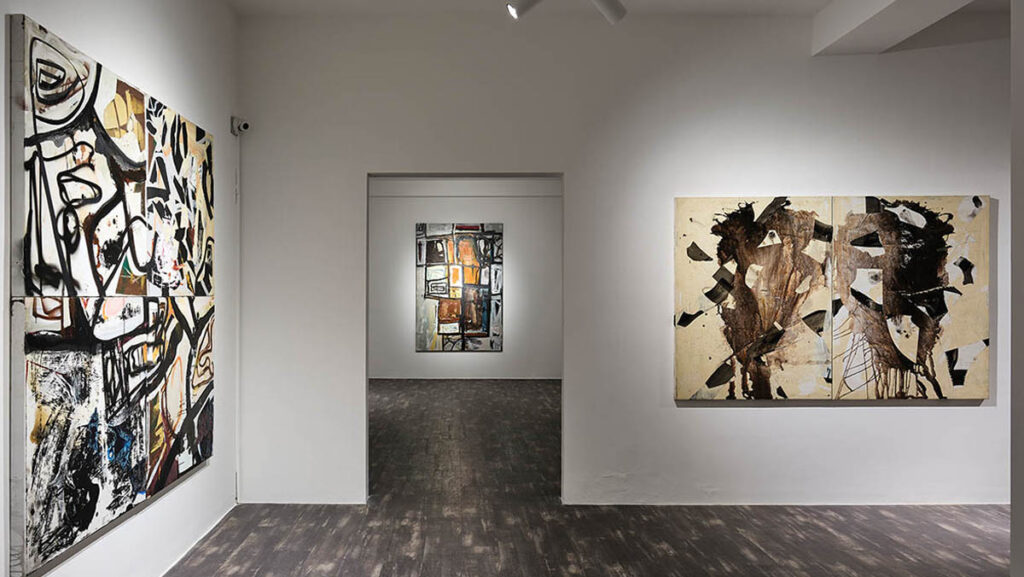
Her recent solo exhibitions include shows at Olga Korper Gallery (Toronto, Canada), The Hole (New York, USA), and Museo Belvedere di San Leucio (CE, Italy), as well as group presentations at The X Museum (Beijing, China) and a solo presentation at NADA Miami (Florida, USA).
Which themes do you explore in your art? I am an abstract painter who’s interested in the logic of the machine and our current post-digital condition. I make oil paintings that use data as a starting point. My investigation is a painterly one — I’m thinking about abstraction and what it means to paint today. This naturally brought me to digital and generative modes of working. I’m constantly trying to figure out what a painting can be how to make it… and also how to reflect the time that I’m living in (which inevitably straddles this digital and physical divide).

My first series, titled ‘Soft Body Dynamics’, began with an investigation into chance, randomness, and its relationship to abstraction. It all started with the question “What if the computer could scribble, or make the first gesture, the first move in a painting?” I use a custom script to generate unique curvilinear shapes in 3D modeling software, which are then painted entirely by hand using oil on canvas.
More recently, I’ve been expanding my approach. I am now thinking a lot about how we look at painting in today’s digitally mediated environment. In my newest ‘Gaze Paintings’ series, I gather data from eye-tracking software to examine and respond to historical works of art; In these works, my bezier curves are directly mapped through the process of looking, transforming the notion of the gaze into an abstract representation of viewership.

Could you describe your creative process? How do you decide on colors, shapes, and compositions? Essentially, I give myself a lot of rules, and then I break them. My work is the result of a collaboration with the machine. I would describe it as ‚computer-assisted abstraction’. The process for the ‘Gaze Paintings’ starts with collecting eye-tracking data; I have special eye-tracking glasses that I wear to museums and galleries to look at work and record my vision. Every fixation point then becomes a node on a sweeping stroke, when imported into the software. I specifically will look at works that feature a female nude or were painted for the male gaze. Once many unique curves have been generated, I will choose a few that I think play nicely with each other, compose them together in one scene, figure out the light, shadows, and contrast (I will often use colored lighting in my scene), and finally after many iterations, I start painting the composition physically on canvas. Sometimes, I will directly draw from palettes and colors in the historical painting I am referencing, but other times I let my own sense of color guide me. I don’t like to constrain myself in that way. Very often, colors will shift once the brushes come out and I start painting, which is part of the beauty of making a painting.

How important is experimentation in your artistic practice? Extremely important. I am always discovering something new and it’s exciting to see where a new thread of inspiration will take me.
How does art-making impact other parts of your life?
Art is life and life is art!
What is your favorite drink?
Old fashioned, no sugar.

What are you currently working on?
I’ve just opened a solo exhibition at Olga Korper Gallery in Canada, it’s up until April 27th, 2024. Next up I have group shows in Berlin, Montreal, and New York.
Vickie Vainionpää – www.vickievainionpaa.com, www.instagram.com/vickiejv





